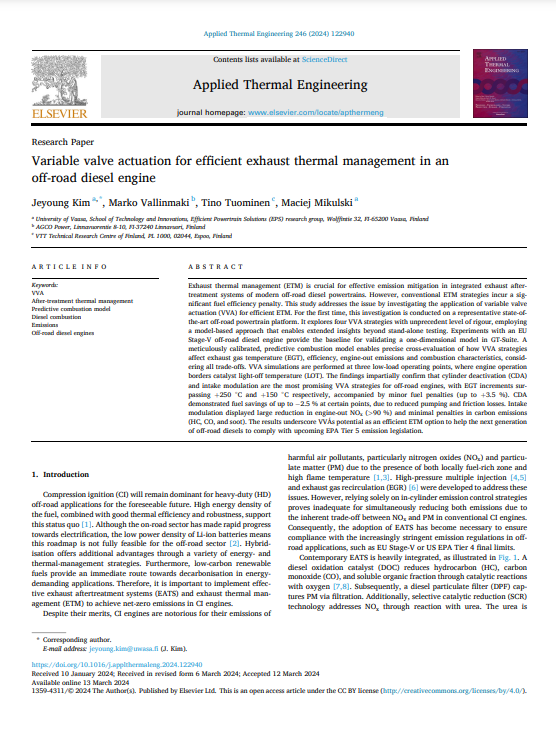Exhaust thermal management (ETM) is crucial for effective emission mitigation in integrated exhaust aftertreatment systems of modern off-road diesel powertrains. However, conventional ETM strategies incur a significant fuel efficiency penalty. This study addresses the issue by investigating the application of variable valve actuation (VVA) for efficient ETM. For the first time, this investigation is conducted on a representative state-of-the-art off-road powertrain platform. It explores four VVA strategies with unprecedent level of rigour, employing a model-based approach that enables extended insights beyond stand-alone testing. Experiments with an EU Stage-V off-road diesel engine provide the baseline for validating a one-dimensional model in GT-Suite. A meticulously calibrated, predictive combustion model enables precise cross-evaluation of how VVA strategies affect exhaust gas temperature (EGT), efficiency, engine-out emissions and combustion characteristics, considering all trade-offs. VVA simulations are performed at three low-load operating points, where engine operation borders catalyst light-off temperature (LOT). The findings impartially confirm that cylinder deactivation (CDA) and intake modulation are the most promising VVA strategies for off-road engines, with EGT increments surpassing +250 °C and +150 °C respectively, accompanied by minor fuel penalties (up to +3.5 %). CDA demonstrated fuel savings of up to −2.5 % at certain points, due to reduced pumping and friction losses. Intake modulation displayed large reduction in engine-out NOx (>90 %) and minimal penalties in carbon emissions (HC, CO, and soot). The results underscore VVÁs potential as an efficient ETM option to help the next generation of off-road diesels to comply with upcoming EPA Tier 5 emission legislation.




















